Question
Issue: How to fix Disk Cleanup will not remove Windows Update Cleanup?
Hello. I tried using Disk Cleanup to remove Windows Update Cleanup, but it does not work. How can I fix it?
Solved Answer
Recently, some users encountered a new issue in Windows 11. The problem involves the Disk Cleanup feature in Windows. One user describes wanting to remove about 2 GB of Windows Update files using Disk Cleanup but failing. The user said that the process seems like it works, but it does not actually delete files, or it is a bug where the files are deleted, but Windows does not recognize it.
It is unknown why this may be happening. Some suggested that it could be caused by third-party antivirus interference or a Windows update.[1] A few people also found a couple of workarounds to get rid of the issue – deleting the shadow copies or reinstalling Windows.
In this guide, you will find 6 steps that may help you fix the Disk Cleanup will not remove Windows Update Cleanup problem. If you want to avoid a lengthy troubleshooting process, you can also use a maintenance tool like FortectMac Washing Machine X9 that can fix most system errors, BSODs,[2] corrupted files, and registry[3] issues. Otherwise, follow the step-by-step instructions below carefully to fix the Disk Cleanup issue.
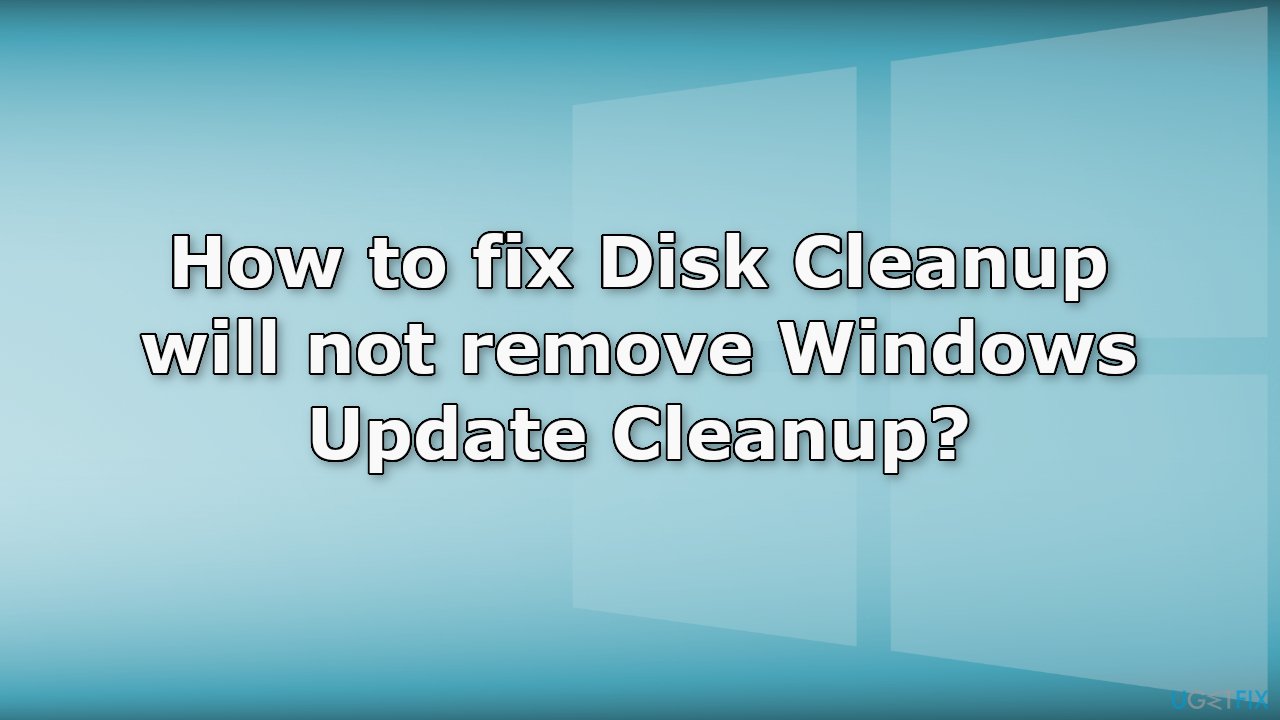
Method 1. Uninstall Third-Party Security Software
Third-Party antivirus often conflicts with Windows processes, so try removing it to see if it resolves the issue.
- Go to your Apps & Features
- Find your antivirus program in the list
- Click on it and press Uninstall
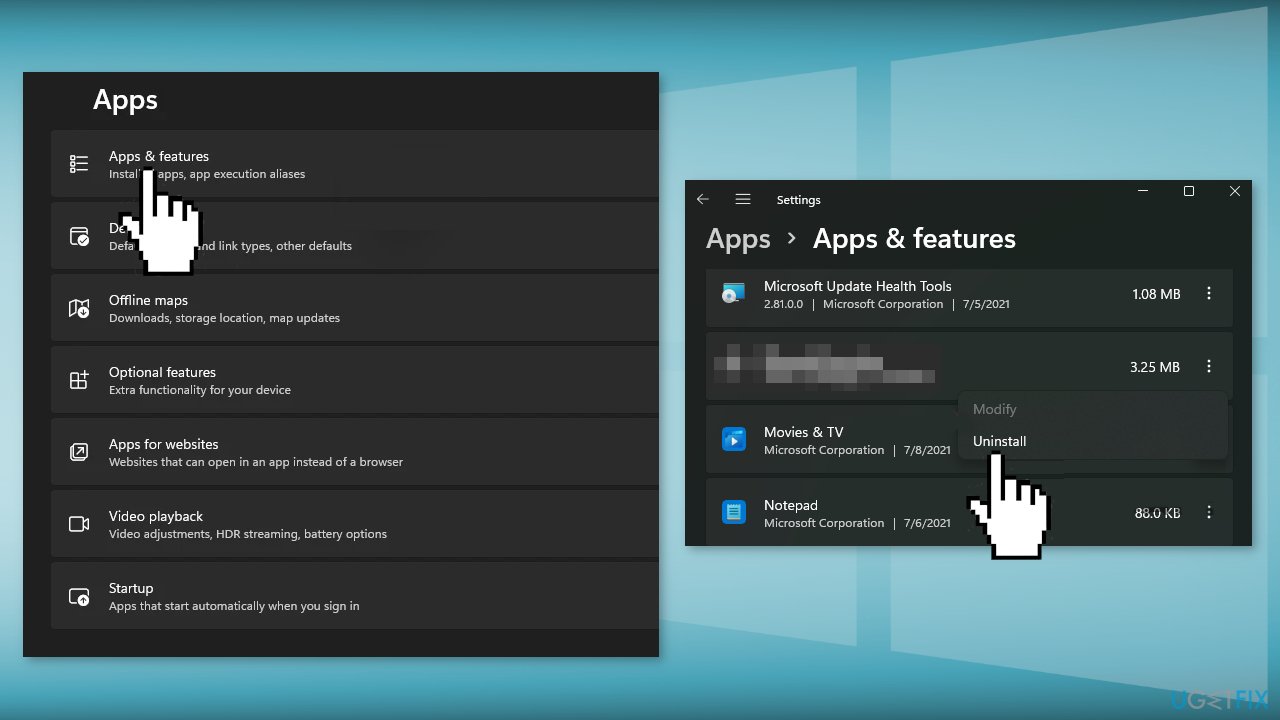
- Wait for the process to finish and try to remove Windows Update Cleanup again
Method 2. Uninstall the KB3194798 Update
- In Settings, from the left sidebar, select Windows Update
- On the Windows Update page, click Update History
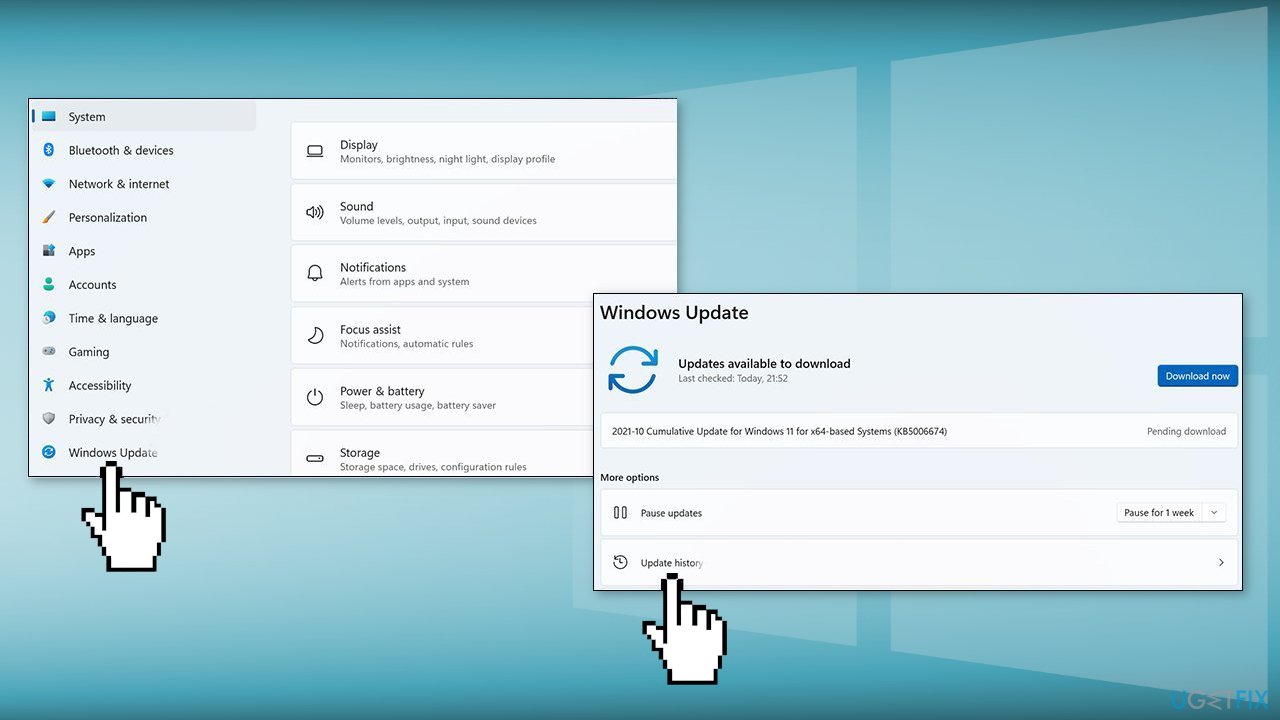
- From the Related Settings section, choose Uninstall Updates
- To remove the KB3194798 update, select it in the list and then click Uninstall
- Click Yes in the prompt to continue
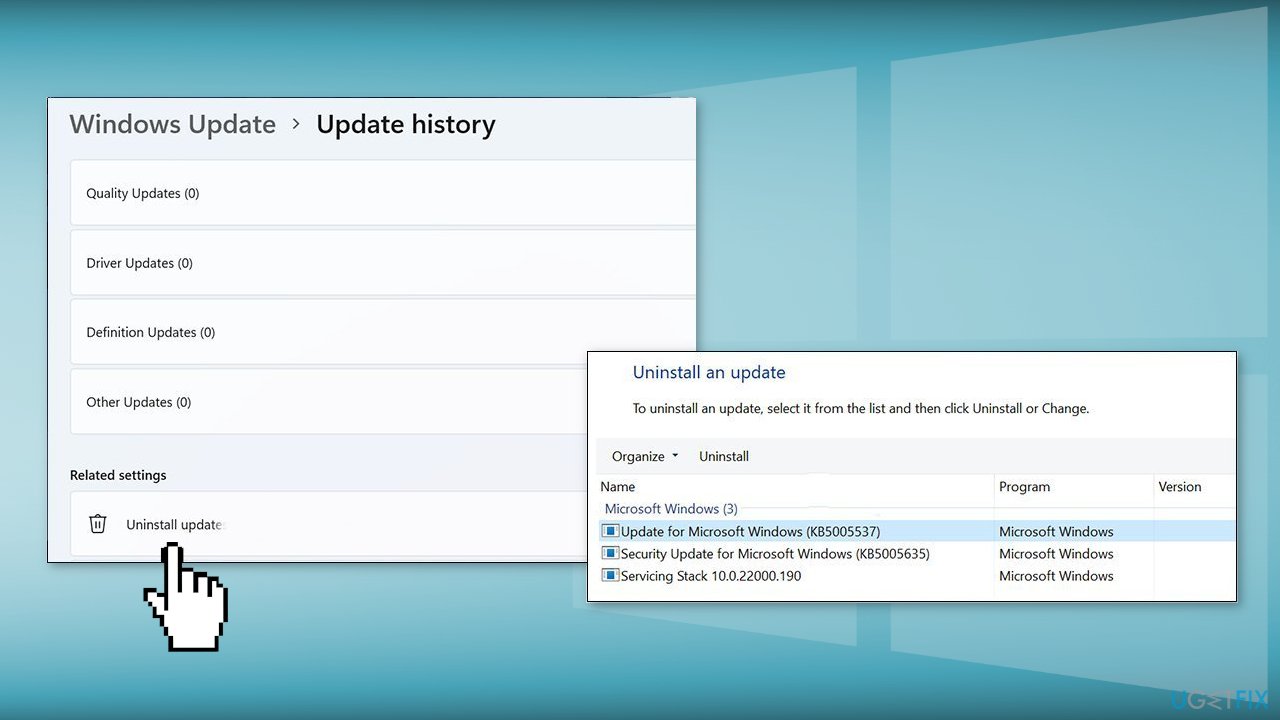
Method 3. Delete the SoftwareDistribution_1 Folder
- Type Services in the Search menu and open Windows Services
- Scroll down to find the Windows Update service
- Right-click on it and select Stop
- Now launch File Explorer
- Go to This PC, then Local Disc (C:)
- Find the Windows folder and then SoftwareDistribution
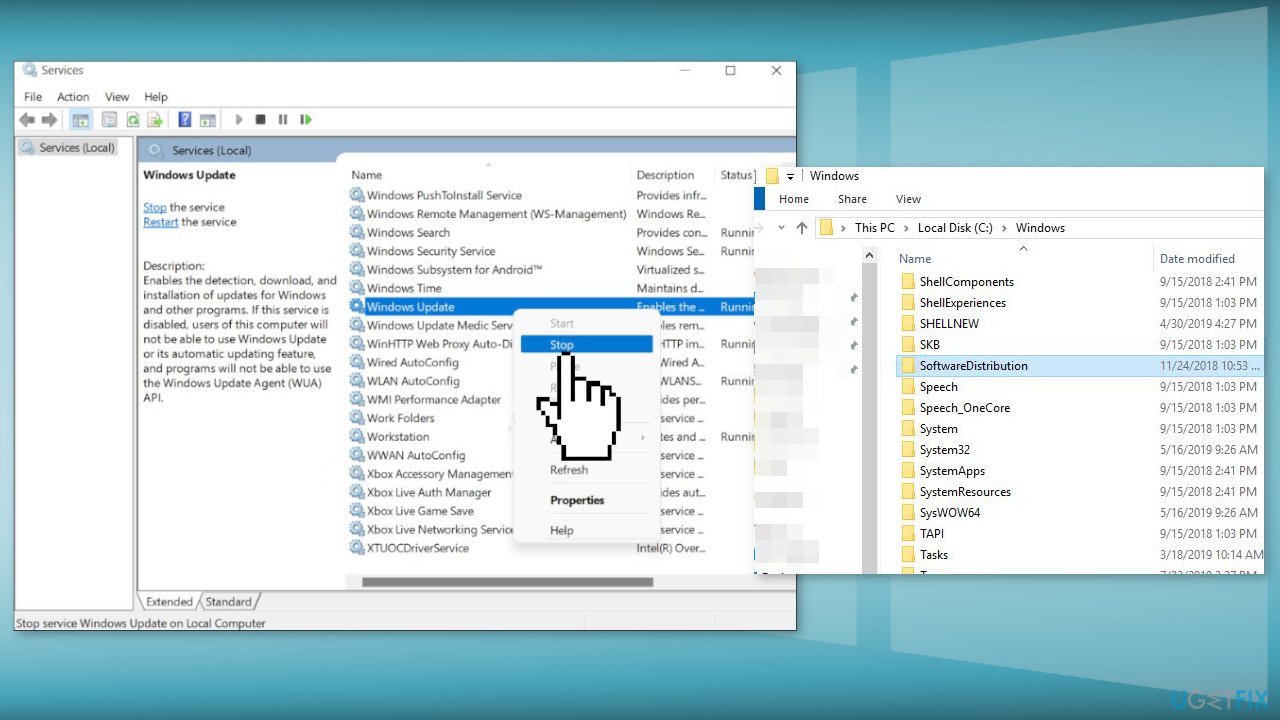
- Rename the SoftwareDistribution folder to SoftwareDistribution_1
- Restart your PC
- Go back to the Windows folder
- You will notice that there are two Software Distribution folders
- Delete the SoftwareDistribution_1 folder
- This should let you clear out the Update folder
Method 4. Delete Shadow Copies
- Find the Command Prompt in the Start menu and press Run as Administrator
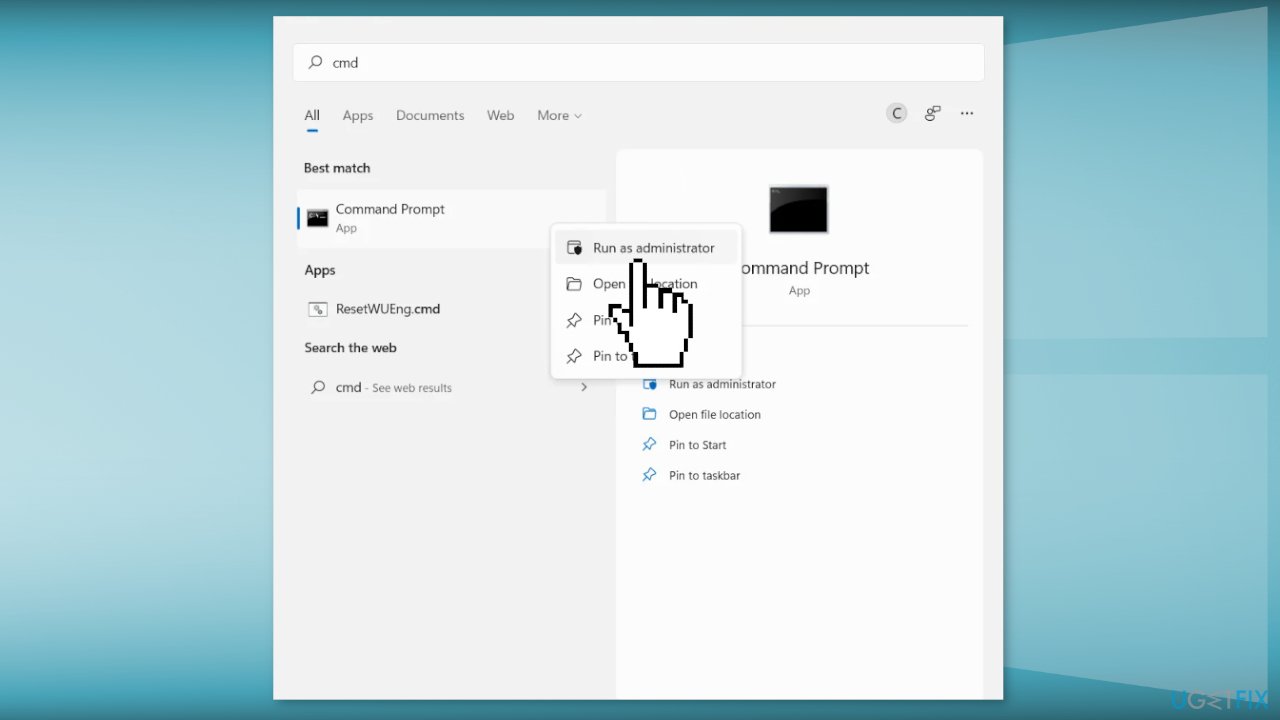
- Type vssadmin delete shadows /all and press Enter
- Type Y when prompted and follow the instructions
Method 5. Repair Install Windows
- Visit the official Microsoft website to download Windows 11 Installation Media
- Run the Media Creation Tool and select Create Installation Media for another PC
- Select your USB drive
- Let the Process complete of writing the Installation files to the USB drive
- Click Finish
- On the PC you wish to upgrade, Press Windows + E to open the File Explorer
- Open the Removable drive and click Setup.exe
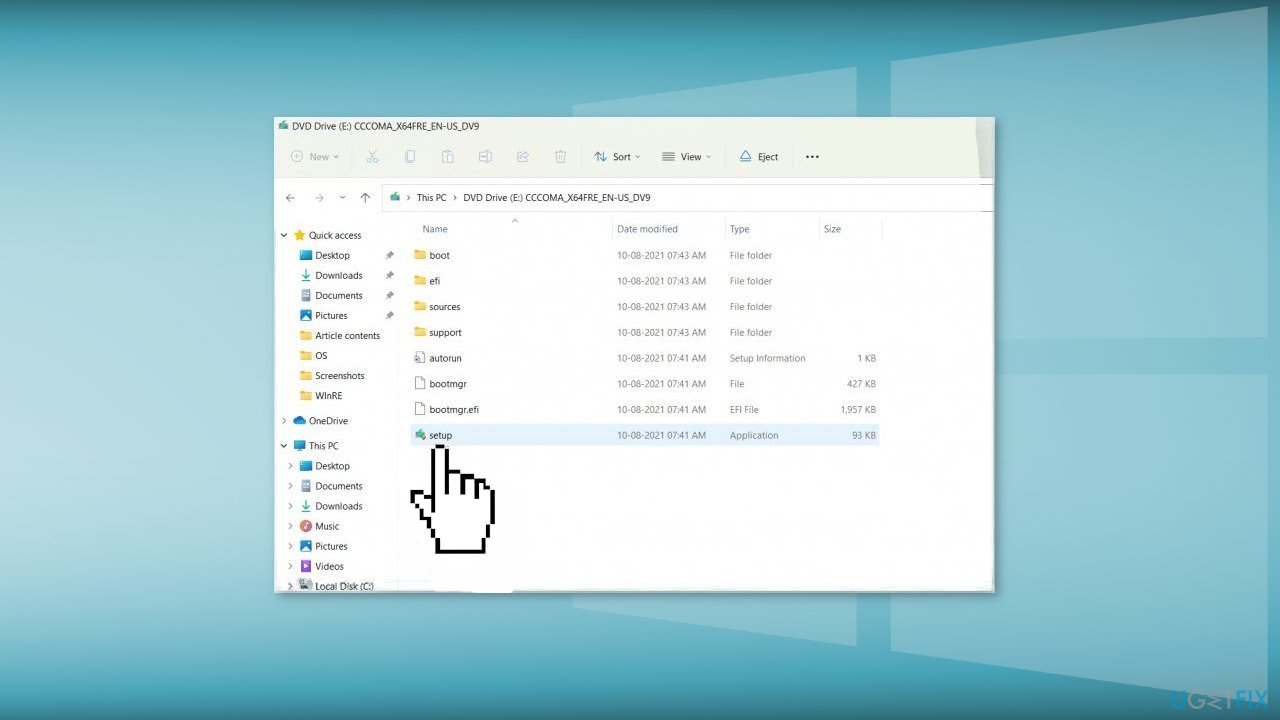
- Accept the license terms on the next screen
- Confirm the Upgrade options – Files, apps and Settings are kept
- Click Install, and the upgrade should start
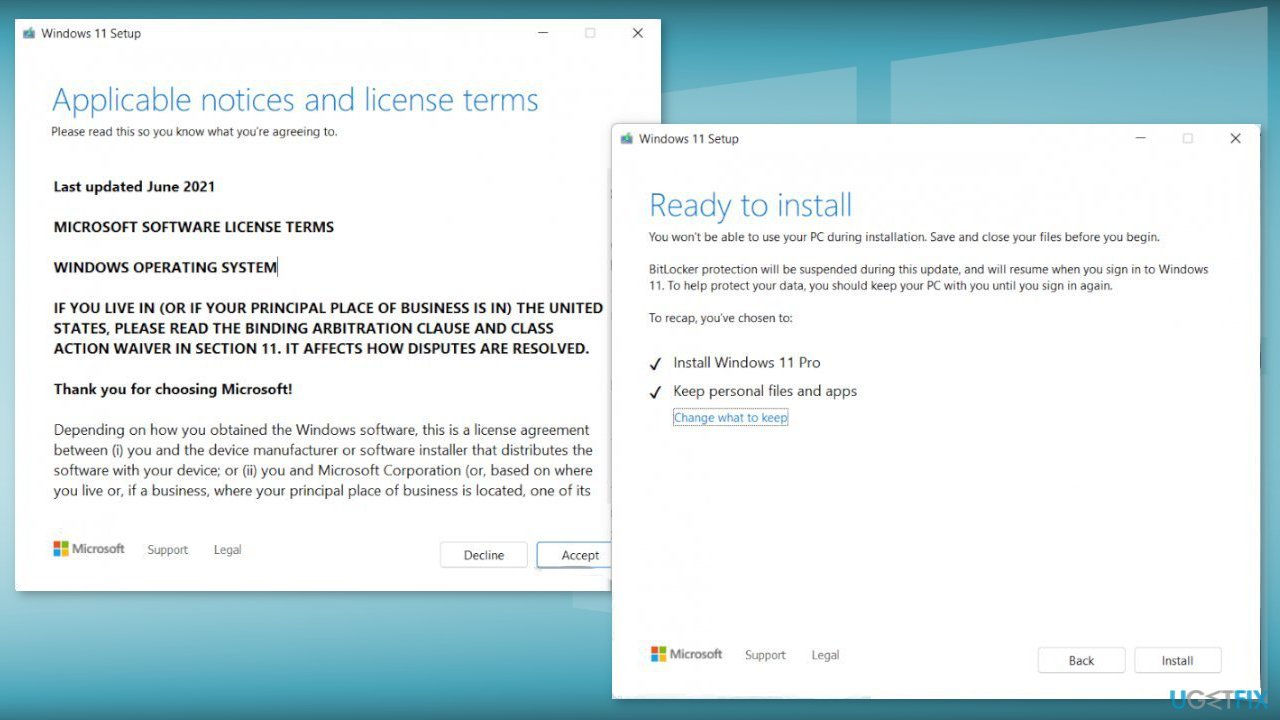
Method 6. Contact Support and wait for a Fix
- Go to the Microsoft Support page and write about your problem
- If the issue is common, there is a big chance that Microsoft will fix it
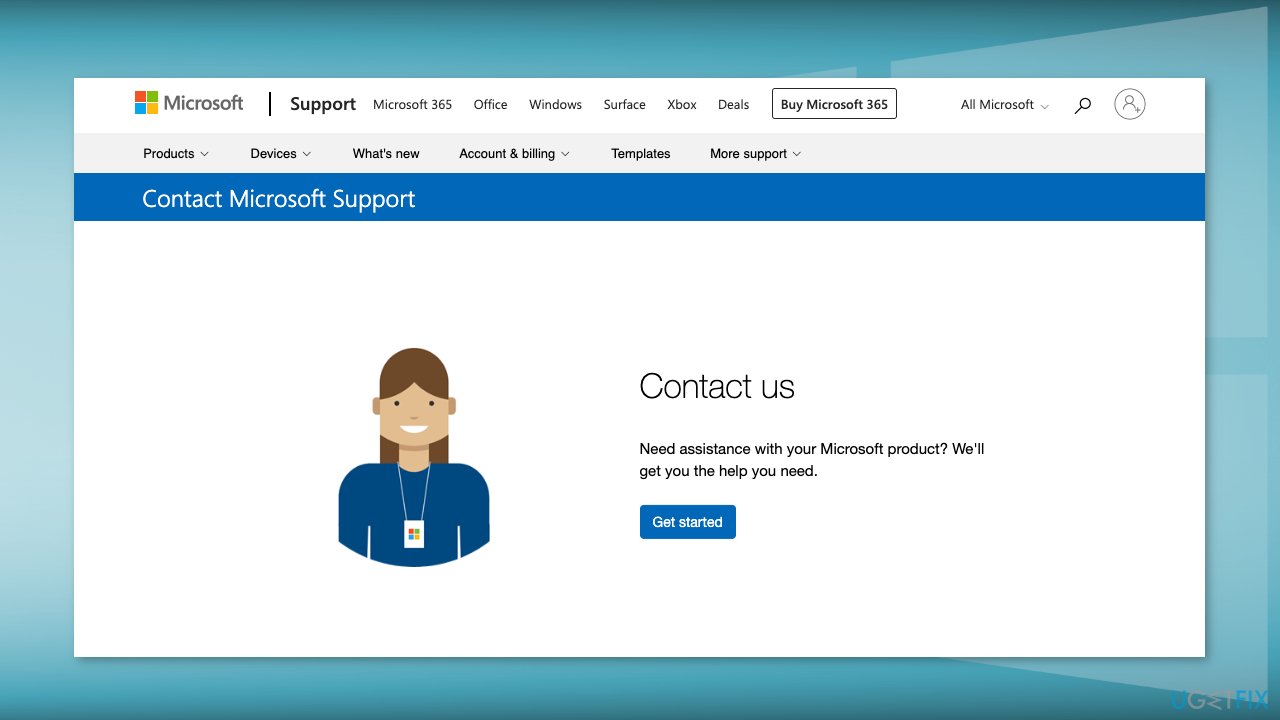
Repair your Errors automatically
ugetfix.com team is trying to do its best to help users find the best solutions for eliminating their errors. If you don't want to struggle with manual repair techniques, please use the automatic software. All recommended products have been tested and approved by our professionals. Tools that you can use to fix your error are listed bellow:
Access geo-restricted video content with a VPN
Private Internet Access is a VPN that can prevent your Internet Service Provider, the government, and third-parties from tracking your online and allow you to stay completely anonymous. The software provides dedicated servers for torrenting and streaming, ensuring optimal performance and not slowing you down. You can also bypass geo-restrictions and view such services as Netflix, BBC, Disney+, and other popular streaming services without limitations, regardless of where you are.
Don’t pay ransomware authors – use alternative data recovery options
Malware attacks, particularly ransomware, are by far the biggest danger to your pictures, videos, work, or school files. Since cybercriminals use a robust encryption algorithm to lock data, it can no longer be used until a ransom in bitcoin is paid. Instead of paying hackers, you should first try to use alternative recovery methods that could help you to retrieve at least some portion of the lost data. Otherwise, you could also lose your money, along with the files. One of the best tools that could restore at least some of the encrypted files – Data Recovery Pro.
- ^ Woody Leonhard. Problems continue with Windows 10 Anniversary Update 1607, KB 3194798. Computerworld. Operating System News.
- ^ Chris Hoffman. Everything You Need To Know About the Blue Screen of Death. Howtogeek. Tech Insight Magazine.
- ^ Tim Fisher. What Is the Windows Registry?. Lifewire. Software and Apps.



